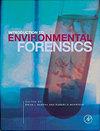基于空间浓度、生物降解指数、化学指纹图谱和碳/氯同位素模式的多重三氯乙烯和四氯乙烯地下水影响综合分异研究
IF 1.5
4区 环境科学与生态学
Q4 ENVIRONMENTAL SCIENCES
引用次数: 0
摘要
本文章由计算机程序翻译,如有差异,请以英文原文为准。
Integrated differentiation of multiple trichloroethylene and tetrachloroethylene groundwater impacts using spatial concentration, biodegradation indices, chemical fingerprinting and carbon/chlorine isotope patterns
Abstract Conventional testing methods provide sufficient information to evaluate human or ecological risk. However, contaminant concentrations patterns alone provide only limited resolution of important liability issues, such as when and where did contaminant releases originate. Over the past few decades, scientists explored the isotope applications to better identify, delineate, and manage contaminants in the environment. Advanced chemical fingerprinting and isotope technologies revealed important linkages between isotope ratios and contaminant origins (e.g., chemical feedstock and manufacturing process). Studies of environmental weathering distinguished abiotic and biotic changes in the chemical composition and isotope patterns. The combined application of chemical and isotopic fingerprints offers powerful complementary lines of evidence for delineating contaminants, assessing risk, and identifying historical sources. This manuscript provides an integrated forensic approach that systematically links conventional environmental investigation data with specialized chemical fingerprinting and carbon/chlorine isotope methods for identifying the sources of groundwater impacts especially when multiple potential point and non-point sources exist. This paper focusses on chlorinated solvents. Specifically, it features the synoptic use of chemical concentration patterns and compound-specific isotope analysis (CSIA) as effective tools for confirming organic contaminant sources, characterizing environmental weathering, and answering a growing list of site-specific questions. Unlike conventional isotope methods, which can be both time-consuming and expensive, this paper presents an optimized analytical method for chlorine CSIA using gas chromatography-quadrupole mass spectrometry (GC-qMS). Chlorine isotopic composition for multiple analytes (e.g., tetrachloroethylene [PCE], trichloroethylene [TCE], dichloroethylene [DCE], and vinyl chloride [VC]) can be determined in one acquisition thus reducing analysis time and cost. Precise CSIA isotope values were achieved for chloroethylene concentrations between approximately 5 micrograms per liter (ug/l) and 100 ug/l for carbon and between approximately 30 ug/l to 1,000 ug/l for chlorine. The gradual improvement in CSIA methods better addresses the wide concentration range encountered in typical samples collected from groundwater aquifers with significant chlorinated solvent impacts. A case study is presented featuring a tiered forensic investigation using spatial chemistry and isotope patterns to evaluate commingled plumes of PCE and TCE.
求助全文
通过发布文献求助,成功后即可免费获取论文全文。
去求助
来源期刊

Environmental Forensics
环境科学-环境科学
CiteScore
4.90
自引率
5.60%
发文量
23
审稿时长
3 months
期刊介绍:
Environmental Forensics provides a forum for scientific investigations that address environment contamination, its sources, and the historical reconstruction of its release into the environment. The context for investigations that form the published papers in the journal are often subjects to regulatory or legal proceedings, public scrutiny, and debate. In all contexts, rigorous scientific underpinnings guide the subject investigations.
Specifically, the journal is an international, quarterly, peer-reviewed publication offering scientific studies that explore or are relevant to the source, age, fate, transport, as well as human health and ecological effects of environmental contamination. Journal subject matter encompasses all aspects of contamination mentioned above within the environmental media of air, water, soil, sediments and biota. Data evaluation and analysis approaches are highlighted as well including multivariate statistical methods. Journal focus is on scientific and technical information, data, and critical analysis in the following areas:
-Contaminant Fingerprinting for source identification and/or age-dating, including (but not limited to) chemical, isotopic, chiral, mineralogical/microscopy techniques, DNA and tree-ring fingerprinting
-Specific Evaluative Techniques for source identification and/or age-dating including (but not limited to) historical document and aerial photography review, signature chemicals, atmospheric tracers and markets forensics, background concentration evaluations.
-Statistical Evaluation, Contaminant Modeling and Data Visualization
-Vapor Intrusion including delineating the source and background values of indoor air contamination
-Integrated Case Studies, employing environmental fate techniques
-Legal Considerations, including strategic considerations for environmental fate in litigation and arbitration, and regulatory statutes and actions
 求助内容:
求助内容: 应助结果提醒方式:
应助结果提醒方式:


